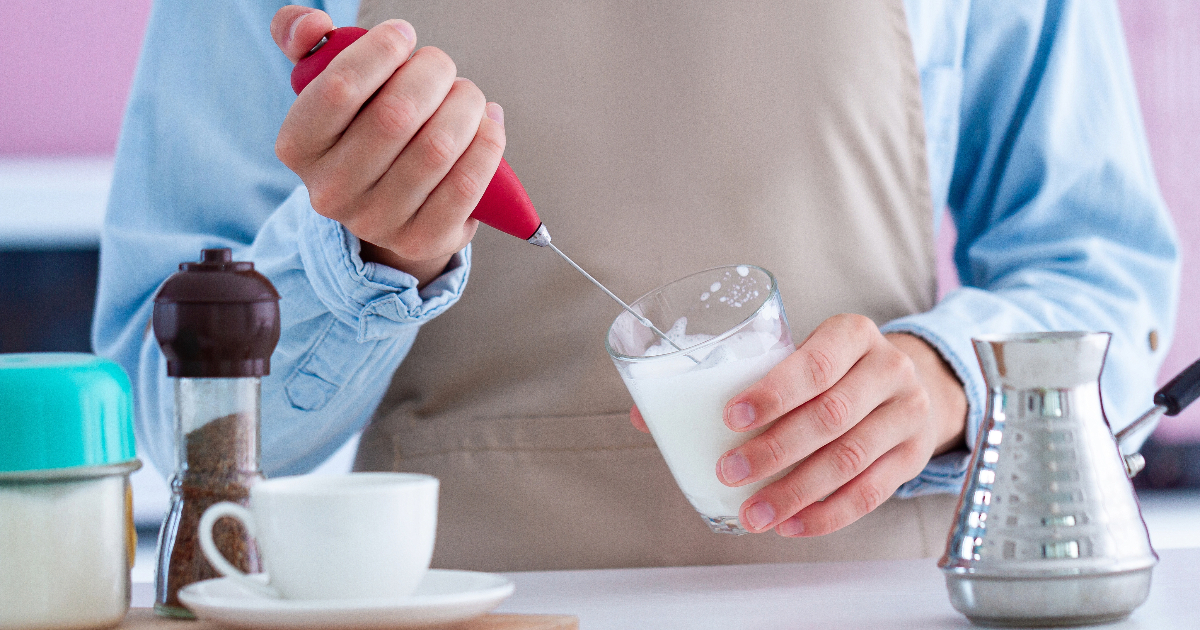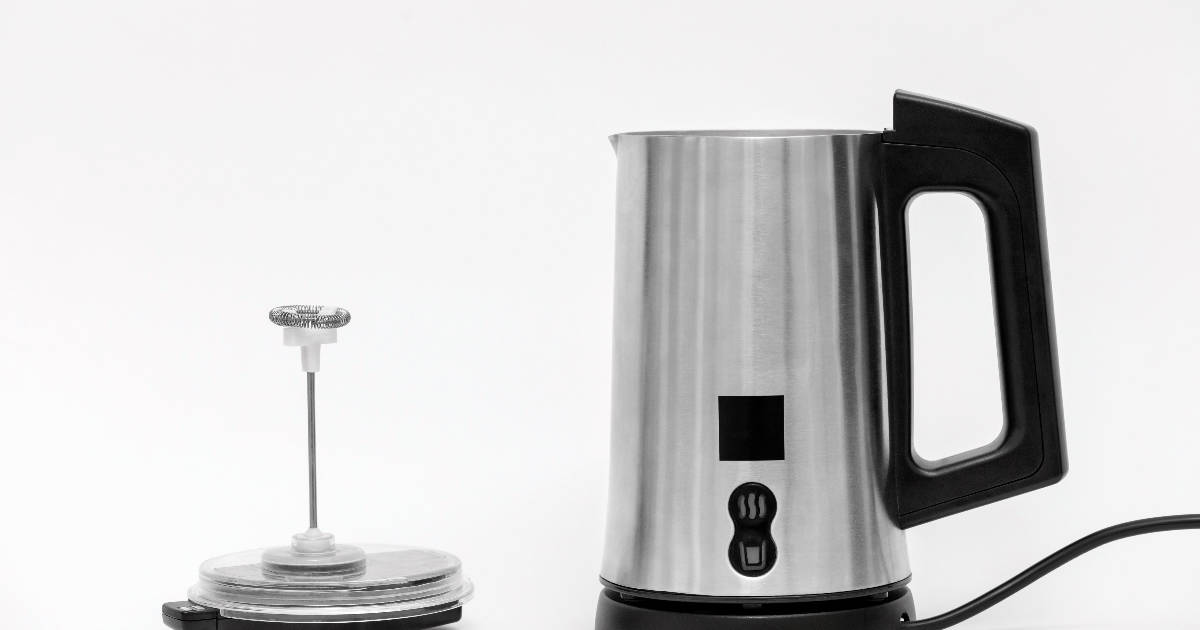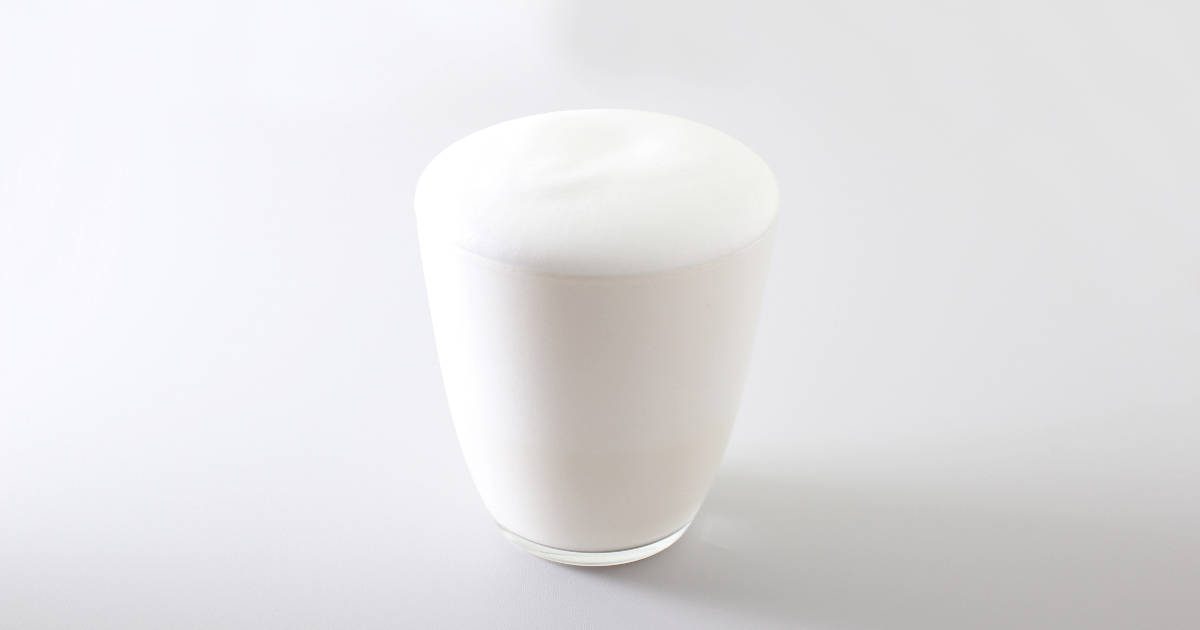A milk frother is a handy kitchen gadget that creates foamy, airy milk to use in coffee drinks like lattes, cappuccinos, and more. There are several types of milk frothers, but they all work by introducing air into milk through rapid whisking or heating.

Understanding the basics of how milk frothers work will help you choose the right type and use it properly to make perfect-frothed milk every time.
Types of Milk Frothers
There are three main types of milk frothers:
Electric Milk Frothers

Electric milk frothers are the most popular type for home use. They consist of a motorized base and a jug with a built-in whisk or spinning disc inside.
When turned on, the rapid spinning motion introduces air into the milk to create silky foam. Many electric frothers also have induction heating to gently warm the milk while frothing.
Electric frothers allow hands-free operation with the press of a button. Just pour milk into the jug, attach it to the base, and select your desired setting.
Handheld Milk Frothers

Handheld milk frothers, also called frothing wands, are small battery-operated whisks. To use one, you submerge the whisk end into milk and turn it on.
The spinning whisk adds air to the milk, causing it to expand into a light, airy foam. Handheld frothers give you more control over the texture but require holding the wand yourself.
Manual Milk Frothers

Manual milk frothers work similarly to a French press. A plunger with a fine mesh screen is pushed up and down to force air through and into the milk below.
It requires more effort on your part but can create excellent foam without batteries or electricity. Just be sure to hold the lid firmly in place while plunging.
How Milk Frothers Work
While the mechanisms differ slightly, milk frothers work by introducing air into milk through rapid agitation. As the air gets whipped into the milk, bubbles form, expanding the volume.
The more air incorporated, the thicker the foam becomes. Tiny air bubbles give frothed milk a light, airy texture compared to plain milk.
Electric frothers use automatic whisks or spinning discs that rotate rapidly when turned on, aerating the milk. The induction heating plate gently warms the milk at the same time for hot foam.
Handheld wands whisk and incorporate air manually as you move the spinning whisk through the milk. So you control the texture, but it requires actively holding and moving the wand.
Manual plunger frothers force air through the mesh screen into the milk as you rapidly pump the plunger up and down. The manual effort provides agitation to aerate the milk.
Why Froth Milk?

Frothed milk serves an important purpose beyond just looking pretty in your coffee. Here are some of the main benefits:
- Adds flavor and richness - Heating and aerating milk makes it taste slightly sweeter and gives it a velvety texture. This balances and enhances the coffee's flavor.
- Insulates temperature - The air incorporated into frothed milk helps maintain the drink's ideal serving temperature longer.
- Creates unique texture - Foam introduces a new mouthfeel compared to plain milk, ranging from silky smooth to light and airy.
- Allows latte art - The right consistency of frothed milk is crucial for pouring beautiful latte art on the surface of coffee drinks.
- Variety of drinks - Frothed milk is used in many coffeehouse favorites like lattes, cappuccinos, flat whites, and more.
Tips for Using a Milk Frother
Follow these tips to master your milk frother and achieve optimal frothed milk:
- Always use cold milk straight from the fridge, as warm milk won't froth properly. The milk should be 35-45°F.
- Choose the right milk type. Whole milk makes the creamiest, most stable foam while skim milk makes large bubbles.
- Only fill the frothing container halfway at most to allow for expansion. Overfilling causes overflow.
- Let the frother work its magic - don't over-froth. Milk will thicken quickly and overdoing it makes foam unstable.
- For hot foam, heat milk to 140-155°F before frothing. Boiling milk prevents good foam formation.
- Tap the frothing container on the counter before pouring to pop large bubbles and settle the foam.
Cleaning Your Milk Frother
Proper cleaning keeps your milk frother running smoothly. Follow these steps after each use:
- Rinse right away to prevent milk residue from drying inside the jug.
- Disassemble the pieces according to the user manual. Remove jars, lids, whisks, etc.
- Hand wash detachable parts in warm soapy water. Do not submerge the motorized base in water.
- Air dry all parts fully before reassembling so no moisture gets trapped inside.
- De-grease the jug weekly using a natural citrus cleaner to cut through milk fat buildup.
- Descale electric frothers monthly using the machine's cleaning cycle and descaling solution to remove mineral deposits.
FAQ
What is the difference between frothing and steaming milk?
Frothing involves just adding air to milk to create cold foam. Steaming uses hot steam to simultaneously heat and aerate milk for hot, frothy foam. Standalone frothers make cold foam while steam wands on espresso machines produce steamed milk.
How long does it take to froth milk?
It only takes about 30 seconds to froth milk properly with most electric or handheld frothers. Over-frothing causes the foam to break down. With manual frothers, plan on vigorously pumping the plunger for 20-30 seconds. Steaming milk with a steam wand is even faster at just 5-10 seconds.
Can you put chocolate or flavoring in a milk frother?
You should avoid putting anything but plain milk or milk substitutes into most milk frothers. The exception is high-end electric frothers designed for hot chocolate or other drinks. Otherwise, the chocolate or syrup could gunk up the machinery. Add flavoring after frothing the milk.
What's the white stuff on top when using a milk frother?
The white layer is just the thicker milk foam that naturally separates and floats above the liquid milk layer underneath. Gently swirling the pitcher after frothing will mix it back together. For drinks like cappuccinos, the white layer can be spooned on top to preserve the foam.
Conclusion
With the right milk frother and proper techniques, you'll be steaming and foaming milk like a professional barista in no time. Understanding the types of frothers and how they work removes any mystery behind making sweet, light foam.
Following tips on milk selection, temperature, and volume while avoiding over-frothing are key to milk foam success. Proper cleaning and maintenance will keep your frother running optimally for years.

